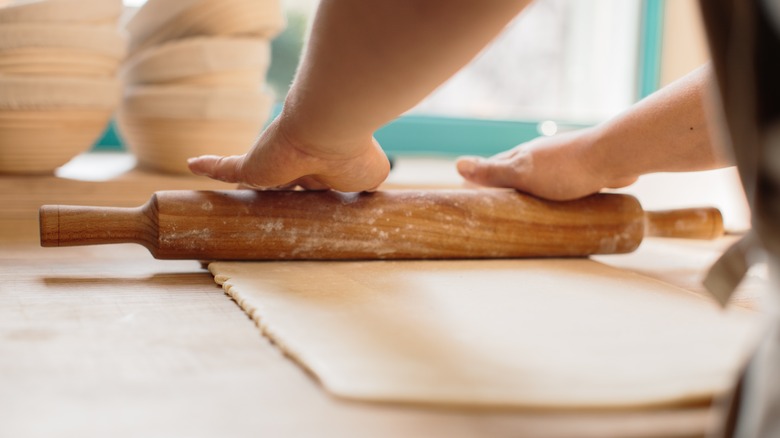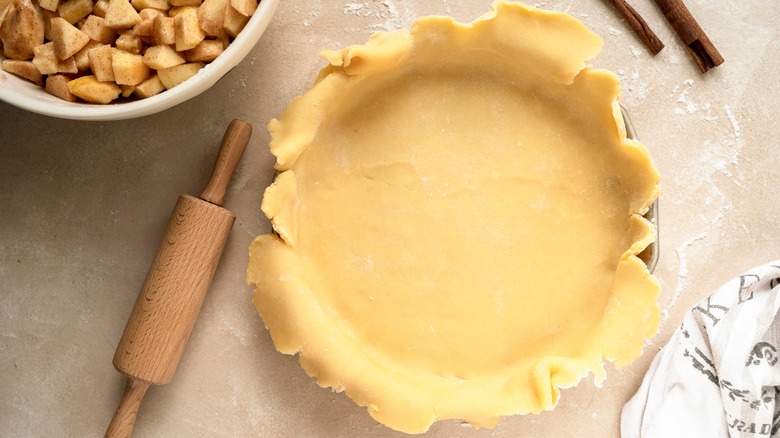For The Softest Pie Dough, Don't Overwork It
The quest for perfectly tender and soft pie dough shows just how fickle a crust can be. Pie crusts live and die by their texture, that's the whole reason why they're made. Sure, pie crust tastes great, but the core of its appeal lies in the contrast between the pie filling and its crisp container. Likewise, nothing ruins a pie like a tough or soggy crust. The excitement of your indulgent pastry washes away as you try to hack through the crust with your fork, or scoop up wet globs of dough, and wonder why you spent so much time trying to make a pie at home. Few other kitchen projects can leave you forlornly wondering where you went wrong like a bad pie can.
The problem is there are a lot of ways pie dough can go wrong. Pie crust really is delicate and temperamental. That is because you're trying to achieve something that is both robust enough to hold a pie together, but still soft, buttery, and flaky. It's a difficult balance. Even if you get the ingredient ratio just right, and keep the crust at the right temperature, you can still see things go wrong by handling pie crust poorly, especially by overworking your dough.
Overworked pie dough ends up tough
Overworking pie dough is all about dealing with our old friend gluten. Developing some amount of gluten is good for pie crusts, because without gluten the crust would crumble into pieces, but if you've developed to much gluten, you'll get a tough chewy pie crust. Like everything with pie dough, it's about finding the right balance.
The good news is that bringing your pie dough together and rolling it out will form some amount of gluten. Even just the act of adding water to flour starts the gluten formation process, and any amount of handling after that will accelerate it. It is just as possible to underwork your pie dough as overwork it, but mixing your dough and shaping it will get you most of the way to a crust that holds its shape properly.
While it would be pretty impossible to make a standard pie dough without any gluten development, overworked crust, on the other hand, is very easy to achieve. The leathery and tough texture of overworked dough comes from developing too much gluten, and is easy to do while working in butter, kneading the dough, and rolling it out. To avoid overworked pie dough, you can take a couple of easy steps. Make sure the dough is properly hydrated before you start rolling it out, stop kneading as soon as the dough is uniform, and cover holes in your crust by cutting and patching instead of re-rolling your dough.
It might take some practice, but with a few precautions overworked dough won't be a problem, and you'll get the flaky crust you deserve.

